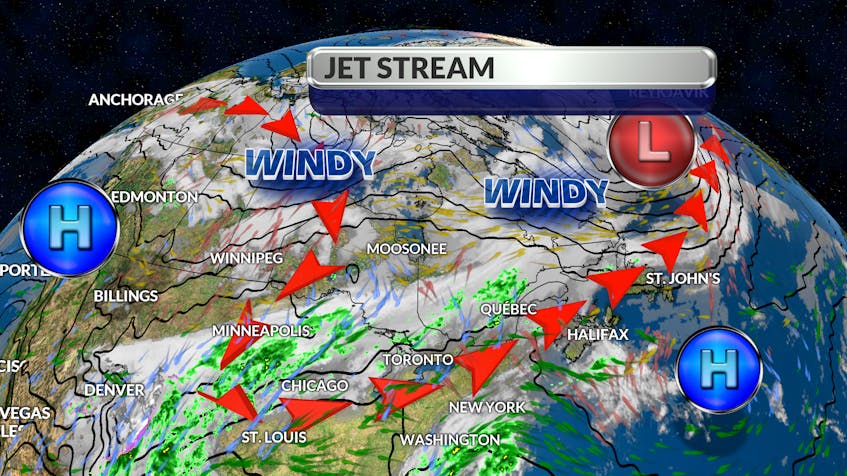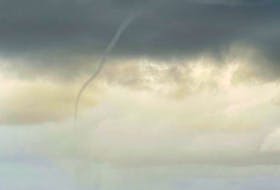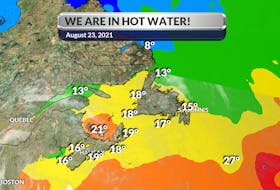I was just back in the office Tuesday morning, following a lovely long weekend, when my phone rang.
I was rushing to build maps for the morning weather video and almost let the call go to voicemail; I’m glad I didn’t. The caller had a very good question about the wind.
Wind can dry your clothes in the summer and chill you to the bone in the winter. It’s strong enough to carry sailing ships across the ocean and rip huge trees from the ground. The wind is part of the weather we experience all the time, but we usually only notice it when it’s blowing. The caller, however, wanted to know where the wind has gone? He has lived in the Halifax area for a few decades but in the last five years or so has noticed a marked lack of wind.
The wind is caused by differences in air pressure. When a difference in atmospheric pressure exists, air moves from the higher to the lower pressure area, resulting in winds of various speeds. Because our planet rotates, the air is deflected by the Coriolis Effect, except right along the equator.
Within the mid-latitudes, weather effects create high and low-pressure zones, called highs and lows, respectively. These mid-latitude systems travel along a ribbon of fast-moving air in the upper level of the atmosphere known as the jet stream.
I’m getting closer to answering the question – I promise.
The position of the jet stream is crucial. The systems that steer the jet stream never act alone. There are half a dozen semi-annual systems that link up to circle the globe. A shift in any or all of these can have a fairly significant impact on the weather - seasonally and longer; one of those controlling systems is the Bermuda High.
For the past few summers, the Bermuda High has found a more northern resting place and has held the jet stream north of our region. For most of the summer, the jet stream has stretched across Labrador. Remember, weather systems track along its core so that’s where the weather systems have been, that’s where the rain has fallen and where the wind is. A northern position on the jet stream also allows for more heat to build up across Atlantic Canada.
The bright, warm, very dry and almost windless summer that we’re experiencing is a result of the position of the Bermuda High and conversely the position of the jet stream.
Experts believe the alarming increase in sea surface temperatures off our coastlines has a major role to play in the migration of these very important controlling weather systems.
Don’t tell U.S. President Donald Trump!
- Want more weather information? Visit your weather page.
- Have a weather question, photo or drawing to share with Cindy Day? Email [email protected]
Cindy Day is the chief meteorologist for SaltWire Network









